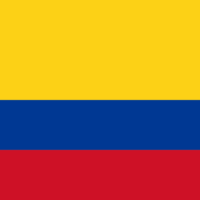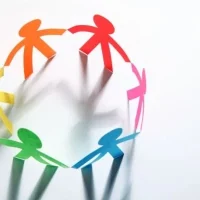In an era marked by rapid environmental degradation and climate change, innovative conservation solutions have emerged as critical tools for preserving biodiversity and promoting sustainable practices. These solutions encompass a wide range of strategies, from advanced technological applications to community-driven initiatives, all aimed at addressing the pressing challenges facing our planet. As the urgency for effective conservation intensifies, it becomes essential for stakeholders, including NGOs, governments, and local communities, to explore and implement these innovative approaches.
Innovative conservation solutions not only focus on protecting endangered species and habitats but also emphasize the importance of integrating human needs with ecological sustainability. This holistic perspective recognizes that successful conservation efforts must engage local communities, leverage scientific advancements, and foster collaboration across various sectors. By embracing creativity and adaptability, conservationists can develop strategies that are not only effective but also resilient in the face of changing environmental conditions.
The Role of the International Union for Conservation of Nature
The International Union for Conservation of Nature (IUCN) plays a pivotal role in shaping global conservation efforts through its extensive network of experts, organizations, and governments. Established in 1948, the IUCN is dedicated to promoting sustainable development and biodiversity conservation worldwide. Its influence extends beyond policy advocacy; it actively engages in research, capacity building, and the dissemination of best practices in conservation.
One of the IUCN’s key contributions is its Red List of Threatened Species, which serves as a comprehensive inventory of the global conservation status of various species. This tool not only raises awareness about biodiversity loss but also informs conservation priorities and funding allocations. By providing a scientific basis for decision-making, the IUCN empowers NGOs and other stakeholders to develop targeted strategies that address the most pressing threats to wildlife and ecosystems.
Examples of Innovative Conservation Solutions
Numerous innovative conservation solutions have emerged globally, showcasing the potential for creativity in addressing environmental challenges. One notable example is the use of drone technology for wildlife monitoring and anti-poaching efforts. Drones equipped with high-resolution cameras and thermal imaging capabilities allow conservationists to survey vast areas of land quickly and efficiently.
This technology has proven invaluable in regions plagued by poaching, enabling real-time data collection and rapid response to illegal activities. Another compelling example is the implementation of community-based conservation initiatives that empower local populations to take an active role in protecting their natural resources. In Namibia, the communal conservancy model has successfully integrated wildlife conservation with community development.
By granting local communities rights over wildlife management, this approach has led to increased wildlife populations and improved livelihoods for residents. Such initiatives demonstrate that when communities are engaged and incentivized, they can become powerful stewards of their environment.
Collaborations and Partnerships in Conservation
Collaboration is a cornerstone of successful conservation efforts, as it brings together diverse stakeholders with varying expertise and resources. Partnerships between NGOs, government agencies, academic institutions, and private sector entities can amplify the impact of conservation initiatives. For instance, the collaboration between the World Wildlife Fund (WWF) and various corporations has led to innovative sustainability practices in supply chains, reducing deforestation and promoting responsible sourcing.
Moreover, cross-sector partnerships can facilitate knowledge sharing and capacity building among organizations working towards similar goals. The Global Environment Facility (GEF) exemplifies this approach by funding projects that involve multiple stakeholders in addressing environmental challenges. By fostering collaboration, GEF has enabled countries to implement integrated solutions that address biodiversity loss while promoting sustainable development.
Challenges and Opportunities in Implementing Innovative Conservation Solutions
While innovative conservation solutions hold great promise, they are not without challenges. One significant hurdle is securing adequate funding for these initiatives. Many innovative projects require substantial upfront investment in technology or community engagement efforts, which can be difficult to obtain in a competitive grant landscape.
NGOs must be strategic in their funding applications, clearly articulating the long-term benefits and sustainability of their proposed solutions. Additionally, resistance from local communities or stakeholders can pose challenges to implementation. It is crucial for conservationists to engage with communities early in the process, ensuring that their voices are heard and their needs are addressed.
Building trust and fostering open communication can help mitigate resistance and create a sense of ownership among local populations. Despite these challenges, opportunities abound for those willing to innovate. The growing recognition of the importance of biodiversity and ecosystem services has led to increased funding from both public and private sectors.
Furthermore, advancements in technology—such as artificial intelligence, remote sensing, and blockchain—offer new avenues for enhancing conservation efforts. By embracing these opportunities and remaining adaptable, NGOs can position themselves at the forefront of innovative conservation solutions.
The Future of Conservation: Trends and Emerging Technologies
As we look towards the future of conservation, several trends and emerging technologies are poised to shape the landscape of environmental protection. One notable trend is the increasing integration of data analytics into conservation strategies. By harnessing big data from various sources—such as satellite imagery, social media, and citizen science—conservationists can gain valuable insights into ecosystem health and species behavior.
This data-driven approach enables more informed decision-making and targeted interventions. Another emerging technology is the use of genetic tools for species conservation. Advances in genomics allow scientists to assess genetic diversity within populations, identify at-risk species, and develop targeted breeding programs.
For example, the use of CRISPR technology has opened up new possibilities for addressing genetic diseases in endangered species, potentially enhancing their chances of survival. In conclusion, innovative conservation solutions represent a vital pathway towards achieving sustainable environmental outcomes. By leveraging technology, fostering collaboration, and engaging local communities, NGOs can enhance their effectiveness in addressing biodiversity loss and promoting ecological resilience.
As we navigate the complexities of conservation in a rapidly changing world, embracing innovation will be essential for ensuring a thriving planet for future generations.








































